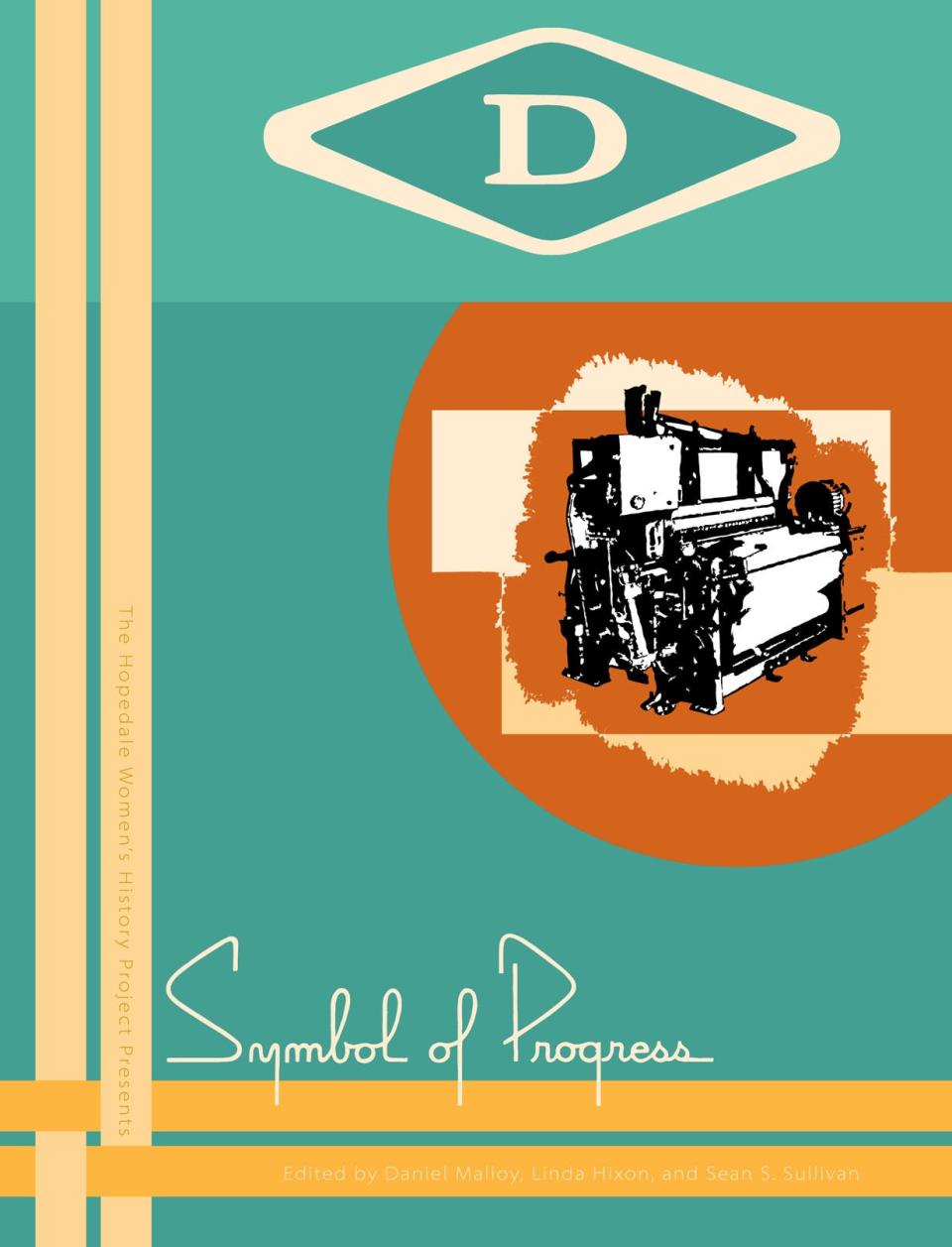'Symbol of Progress': New book depicts the link between the Draper Corp. and Hopedale
HOPEDALE — Linda Hixon has always had a deep and abiding connection to the Draper Corp.
“I grew up in Hopedale and in my grandfather’s generation, he and all six of his brothers worked at the Draper plant,” she said.
For years, she has been collecting old photos of what might be called the "Draper Empire" for a history book she has wanted to write.
When the final remnants of the massive factory began coming down last year, she decided it was the perfect time to get it done.

'Symbol of Progress'
The book, “Symbol of Progress,” was made from a collection of old photos, newspaper clippings and prose mostly written by Hixon. It was released earlier this fall and the Hopedale Women's History Project — a nonprofit organization Hixon founded and for which she serves as president — is selling it on Amazon and the Little Red Shop Museum in Hopedale.
The book will also be available for sale during Hopedale's winter stroll event on Saturday. Proceeds will go toward supporting the Hopedale Women's History Project future history projects.
A company town: For decades, Draper Corp. loomed over Hopedale
But "Symbol of Progress" is nowhere near the complete and definitive history of Draper Corp, Hixon said.
“This is merely a look at the Draper companies — and originally there were many — over the years in photos and words,” she wrote in the book's introduction of the book. “The Draper family was proud of their accomplishments, and rightly so. Over the years, hundreds of photographs were taken of their buildings, their products, their worker housing and their workers, more images than could possibly fit a book of this length.”
Hopedale was a Christian society
The story of the Draper family coming to Hopedale starts with the founding of Hopedale itself in 1842. Ebenezer Draper was among more than 20 people who joined the Rev. Adin Ballou in creating a Christian commune society on about 258 acres of farmland on the outskirts of what was then part of Milford.
Photos: Demolition fast tracked at Draper Mill in Hopedale
To help make money for the community, Ebenezer Draper created a business based on his father’s patented self-acting loom temple technology.
In 1853, Draper's brother, George, came to town and helped expand the business to what it would go on to become — the largest automatic loom maker in the world, Hixon said, and the dominant force of Hopedale. The company would go on to provide thousands of jobs, workforce housing and more.
Draper Corp. closed in 1980.
History in the Little Red Shop Museum
Hixon spent the past year gathering newspaper archives, visiting Hopdale’s history center in the Little Red Shop Museum and scanning old documents and photos for the book.
What's Next?: Ideas for a new downtown Hopedale emerge from Draper complex rubble
She ended up leaving out more than she included, she said, adding she has enough information to write several books.
“This is just the first, I hope, of many,” Hixon said.
The next project will focus on Draper Corp. workers, she said.
Hixon said "it is a shame that the building couldn’t be saved,” but hopes the book can be an educational resource for anyone interested in learning more about Draper Corp. history and those who would like to reflect on the past.
“Hopedale and Draper are totally intertwined,” she said. "What Hopedale became and how it was molded was because of the Draper family.”
Cesareo Contreras can be reached at 508-626-3957 or ccontreras@wickedlocal.com. Follow him on Twitter @cesareo_r.
This article originally appeared on The Milford Daily News: Hopedale MA women's history group publishes book on Draper Corp. mill

